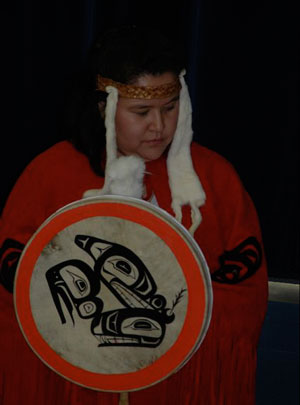|
09 July 2013
 The traditional, hereditary system is active in the Gitxsan nation. The traditional, hereditary system is active in the Gitxsan nation.
It is a matrilineal system with members of a Wilp, or House, tracing their lineage through their mothers. All Gitxsan belong to a Wilp, which is the basic unit for social, economic and political purposes. The Wilp is a collection of closely related people. It consists of one to several families and membership can number from 20 to more than 250 people. Each Wilp has a hereditary chief. A hereditary chief may have several wing chiefs who perform particular functions for House members such as planning and administering forestry work, tourism initiatives or commercial fishery undertakings.
There are more than 50 Wilps (House groups), each with their own territory within the Gitxsan nation.
Each Wilp belongs to one of four Gitxsan clans: Lax Gibuu (Wolf); Lax Seel or Lax Ganeda (Frog); Gisgaast (Fireweed); and Lax Skiik (Eagle).
The feast hall, called the potlatch by some coastal First Nations, is the forum where business, social and political decisions are legitimized in the traditional system. Gitxsan traditional society also has a series of laws dealing with conservation and activities within House territories. Traditional history and laws are passed on orally.
Each Wilp has an adaawk (oral history), which describes important events in its existence. The carvings on a totem pole record parts of a Wilp’s adaawk. The adaawk is tied to the territory, and events depicted by the crests on totem poles signify jurisdiction over a particular territory by a Wilp and its hereditary chief.
|





